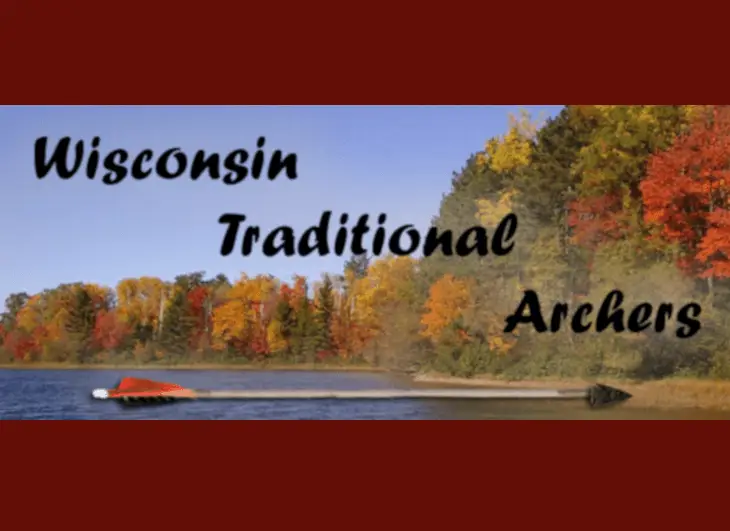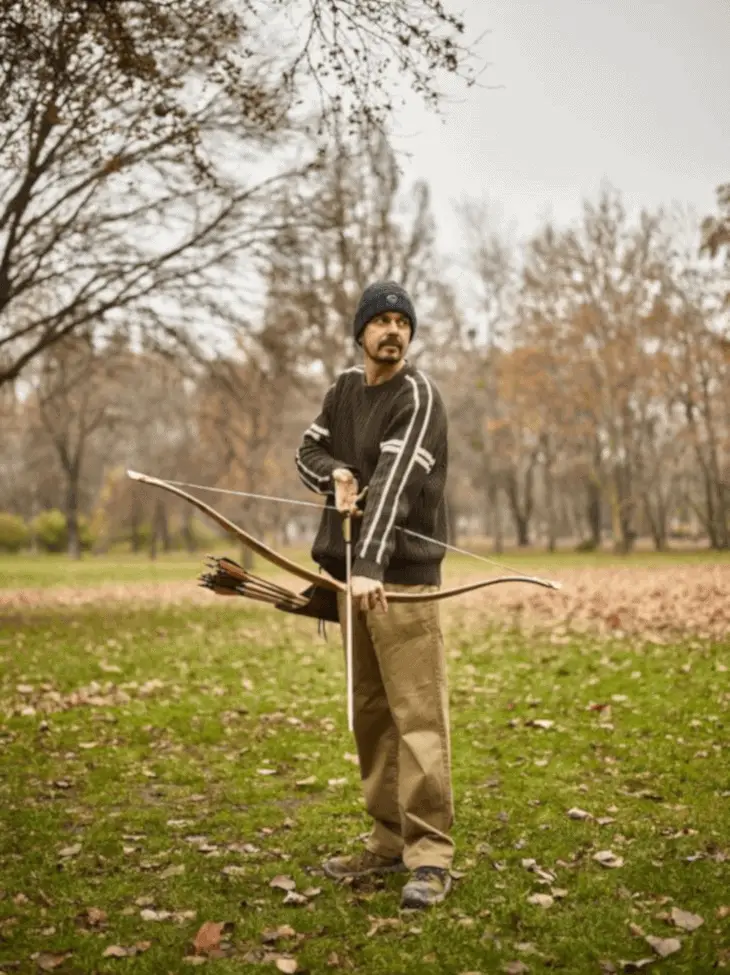Over the last few months, we’ve been getting a ton of email about traditional archery. Both new and veteran archers alike seem to have a great deal of questions about the topic, and while we have a fair bit of content about traditional archery, we figured it would be great if we could interview an expert: someone who’s got a deep knowledge about the pastime, who could help our readers get involved in the sport, and who could answer a lot of questions first-time traditional archers have. Traditional archery is a practice that eschews a lot of modern equipment, and many people don’t know how that works.
And that’s why we’re so excited about today’s post: we got in touch with Gary VandenLangenberg, President of the Wisconsin Traditional Archers, who was kind enough to grant us a long-form interview about traditional archery, his tenure as president of a group dedicated solely to the pastime, and how to get into traditional archery if you don’t know where to start.
We owe a big thank you to Gary, and if you’re in or near Wisconsin, check out the Wisconsin Traditional Archers! They seem like a talented bunch of folks who truly understand and appreciate traditional archery, and the events that Gary describes below sound like an absolute blast. You can get their contact information and their shoot schedule when you visit their website here.
OK, let’s jump in:

Q. Gary, thank you for your talking with us. Would you tell us a little bit about yourself, and what your role as President of the Wisconsin Traditional Archers entails?
A. Sure. I was born, raised, and continue to live in Green Bay, WI. My Dad is an avid hunter and fisherman and he deserves the credit for getting me into hunting. I first started bowhunting in the early 90’s and shot a compound bow until 2006, when I bought a recurve bow and made the switch to traditional archery and became a member of Wisconsin Traditional Archers.
I was having a ton of fun and in 2008 I jumped into building my own home-made bows and arrows and have been exclusively shooting and hunting with them ever since.
Over the years I’ve gotten more involved with the WTA, first on the board of directors, and then was elected president in February of 2017.
As WTA President, my role entails promoting good relationships with other bow clubs throughout WI. This includes local clubs as well as the Wisconsin Bowhunters Association. I also am responsible for setting the dates and agendas for our quarterly board meetings and making sure that our annual events (State Championship Shoot, Bow Building Jamboree, annual Banquet, Archery Golf event, etc.) get scheduled and communicated to the membership. I also oversee activities of organization to insure we are staying true to the intended scope and mission of the organization, as well as communicate with the membership any new information or news that may affect them as traditional archers.
Q. That sounds like a lot, and it looks like the Wisconsin Traditional Archers is a pretty large group—would you tell us about the club, its history, and its members?
A. Wisconsin Traditional Archers was formed in 1992 by a group of forward-thinking traditional archers who were concerned that the skills and art of traditional archery were in danger of being lost with the continuing advancements in modern archery equipment. The WTA has been a huge success and has now grown to about 500 members and is going strong.
Our members are a great group of people consisting of men and women from many different backgrounds. They are generally very natural-resources and conservation-minded people, who very much enjoy hunting and the outdoors. I have met some amazing people and have made many great friends by being involved in the WTA.
Q. Can you tell us about some of the benefits of traditional archery? Why do people get involved, and how is it different than non-traditional archery?
A. I’d say the main tangible benefit of traditional archery is the simplicity. There are no sights for aiming, rests, releases, cams, bus cables, stabilizers, or other clutter to worry about coming out of alignment or failing at crunch time. In most traditional set ups, there is also nothing metal except for the broadheads, so minimal risk of things “clanking” together alerting approaching animals. Instinctive and other methods of aiming traditional bows are quicker than sight pins/peep sights and are more effective in low light situations.
The very first thing I realized when making the switch to traditional is it’s just more fun! When I shooting compound bows, out of obligation, I would pull my bow out and blow the dust off a couple months before the hunting season to make sure it was still sighted in and to get re-acquainted with my shot sequence, etc.
Shooting wasn’t all that fun to me. When I started shooting my recurve, I was having a blast! Yes, there are some frustrating moments when learning, but there is nothing better than watching your arrow arcing towards the target and watch it strike dead center on the spot you were looking at. I now shoot all year long an enjoy every minute of it.
People get involved in traditional archery for many reasons, but I think some of the most common are they are looking for a challenge, they enjoy the simplicity, or they like the culture of traditional archery circles. In all the traditional archery events and shoots, people are generally very helpful and supportive, there is no pressure, no egos, and the atmosphere has a hard-to-describe comradery.
Camping out is encouraged at most traditional shoots so there are usually tents and small campers scattered around the grounds, and at night there is usually a group campfire with people having drinks and sharing stories. Again, it’s very fun!

Q. A lot of people are a little bit intimidated by traditional archery. Can you tell us the easiest way to get started in the discipline?
A. One of the most common reasons people get frustrated when trying to get started shooting traditional is they try to start without the proper set up. They buy a cheap recurve of the shelf at a box store or grab Dad’s old recurve out of the closet. Then they buy some stock arrows with no regard for weight or spine, or just use a few arrows they have laying around and then are surprised when the arrows fly terrible and they cannot hit what they are aiming at. Recurves and long bows are capable of shooting as accurately as any compound bow, but they must be set up properly to get good consistent arrow flight.
Unfortunately, there are no bow shops in Wisconsin that specialize in traditional archery, so my recommendation for someone to get started from scratch would be to get in touch with either The Footed Shaft or 3-Rivers Archery. These are two very good traditional archery suppliers and they have the expertise to get a person set up with the basics to get started shooting.
If you go on The Footed Shaft’s web site, go to the “Shoot Schedule” and they list the events in Wisconsin where they will be on site with their mobile archery shop. Going to one of these events is probably the best option since you don’t have to travel very far, you can buy everything you need, plus get guidance from the experts and actually shoot the bow setups to test them out and get pointers before you buy.
Q. What are some common “roadblocks” that keep people from diving in head first? What’s the best way to deal with those types of things?
A. I think the most common road block is the misconception that shooting traditional bows is just a novelty and is not really an effective way to hunt. To the contrary, some of the best and most successful hunters I’ve ever met shoot traditional.
I don’t think everyone can say this, but since I switched to traditional, I have not lost a beat and my success has actually improved. I’ve been bow hunting exclusively traditional for 12 seasons and have 13 big game animals taken in that time, most of them on public land. Yes, my shot distance is more limited, but when I shot compound, nearly every animal I got was inside of 20 yards anyways and I’ve found that my patience is now much better, reducing the number of misses and superficial wounds.
I’ve been encouraging WTA members to submit their success pictures to local newspapers and the Wisconsin Outdoor News to get more face time for traditional kills, and we now do a full color “success” issue of our Stump Shooter newsletter which shows off some amazing animals take by WTA members each year. Hopefully some of this exposure will open people’s eyes on how effective traditional bowhunting can be.
Q. Do you find that the archers in your organization dedicate their time solely to traditional archery, or are there members who practice both traditional and “modern” archery using compounds, etc.?
A. I’d say the vast majority of our members bowhunt exclusively traditional. There are also a couple that shoot trad for fun but have a compound for bowhunting.
Q. Do you have any guidance for parents who want to get their kids started in traditional archery?
A. Getting your kids started shooting at a fairly young age helps for sure. It takes some time to get used to shooting instinctively and with good form, so you don’t want to give the kid a bow a couple months before season and expect them to be successful. Other than that, the same things that apply for adults: make sure the bow and arrows are tuned and set up properly, set realistic expectations for shot distance, and realize that there is going to be a learning curve, so it might take a couple years before you meet your goals.
Q. On your homepage, the mission of the Wisconsin Traditional Archers is, among other things, the “continuation of the traditions and skills passed down by our traditional archery forefathers.” Can you tell us a little bit about those traditions and skills?
A. The traditions refer to things like our summer traditional shoots, annual Bow Building Jamboree, and our annual Fall Hunt. The Fall Hunt is usually early October in Norther Wisconsin and is an event meant to re-create hunting camps of the past. Traditional bows only are allowed and the camping is primitive. There is also a group campfire each night, a group pot luck feast on Saturday, and a swap of hand-made items. The skills we are preserving are things like constructing self-bows, building laminated bows, arrow building and fletching, making bow strings, making accessory items like quivers and arm guards using leather and bead work, and knapping stone arrow points.

Q. Among those folks who don’t know too much about traditional archery, there can be the sense that traditional archery is primarily about bowhunting, but a quick look at your “Shoots” page shows a lot of variety in the events you guys sponsor. Would you tell us a little bit more about those events?
A. Our annual events that are not typical shoots include Bow Jam, Archery Golf, Fall Hunt, and our Banquet.
Bow Jam is an event where we take a weekend and dedicate it to building self-bows. Self-bows are single piece bows carved directly from a section of log called a stave. The event is geared towards teaching, so new bowyers as well as those with experience are welcome. The past few years it has been held at Ojibwa Bowhunters in New Berlin in conjunction with their traditional shoot.
Anyone is welcome to attend, we have bow building tools for everyone to use, there are teachers available to give instruction and answer questions, and we have staves on hand for purchase. The only thing we require is a WTA or Ojibwa membership for all who participate for insurance reasons.
North Fon du Lac archery is the site of our annual Archery Golf event. Former WTA President Greg Szalewski started this tradition and he continues to coordinate the event. For those who have never tried archery golf, it’s a blast! The set-up is similar to a regular golf course with longer and shorter holes and different terrain features to navigate.
The only difference is you shoot arrows instead of hitting a ball, and there isn’t a hole at the end, it’s just a plastic ball you need to shoot your arrow into. It’s a ton of fun shooting with friends and watching each other launch arrows as far as possible on some of the longer holes. Traditional bows really have the advantage in archery golf since there are times you need to take some power off the shot to not “drive” as far or lay up in good position for the final shot.
I explained the Fall Hunt a little bit in one of my earlier answers, but this is really a nice event. The group of WTA members who coordinate this event are great people and they always have a very fun time. Many of the people attending don’t even get out and hunt, they just love to take the quiet time at camp to work on crafts, socialize, read a book, or just enjoy the Fall weather. There are some very talented craftspeople that attend and some of the handmade items for the Saturday raffle/swap are truly amazing works of art.
Our most important and best attended event of the year is our annual banquet. It’s the most important because it is easily our biggest fund raiser of the year, and it is very well attended because it’s a great time! Our banquet is extremely well-organized, attracts traditional vendors of all kinds from every corner of the state and beyond, and we keep things fun with great games and raffles throughout the day giving away the best prizes I’ve ever seen at a banquet like this.
We always seem to get amazing speakers who do a great job with our daytime seminars and keynote dinner speech, and we keep it family-friendly with kids’ activities during the day and a kids-only raffle during dinner. If you have never attended, this year’s banquet is at the Holiday Inn Convention Center in Stevens Point on February 17, and we’d love to see you there.
Q. If someone wants to get involved with the Wisconsin Traditional Archers, who should they call, where they should go, and what can they expect?
A. To get involved with the WTA the first place to visit would be our web site. There you can sign up for a membership, check out what events are coming up near you, and maybe most importantly is the contact information for all the officers and board members. Interested archers can give any of us a call or email with any questions and we will be happy to help.
Making time to come out to our banquet, or any one of the summer traditional shoots hosted by our partner clubs, is also a great place to get a feel for what the WTA is all about and try your hand at shooting a traditional bow.
New traditional archers and WTA members can expect to be challenged, to have a ton of fun, and to participate in the most rewarding past time and organization I’ve ever been a part of.
Q. Well, that about wraps it up for now. Thank you for speaking with us, and all the best to you and the Wisconsin Traditional Archers!




